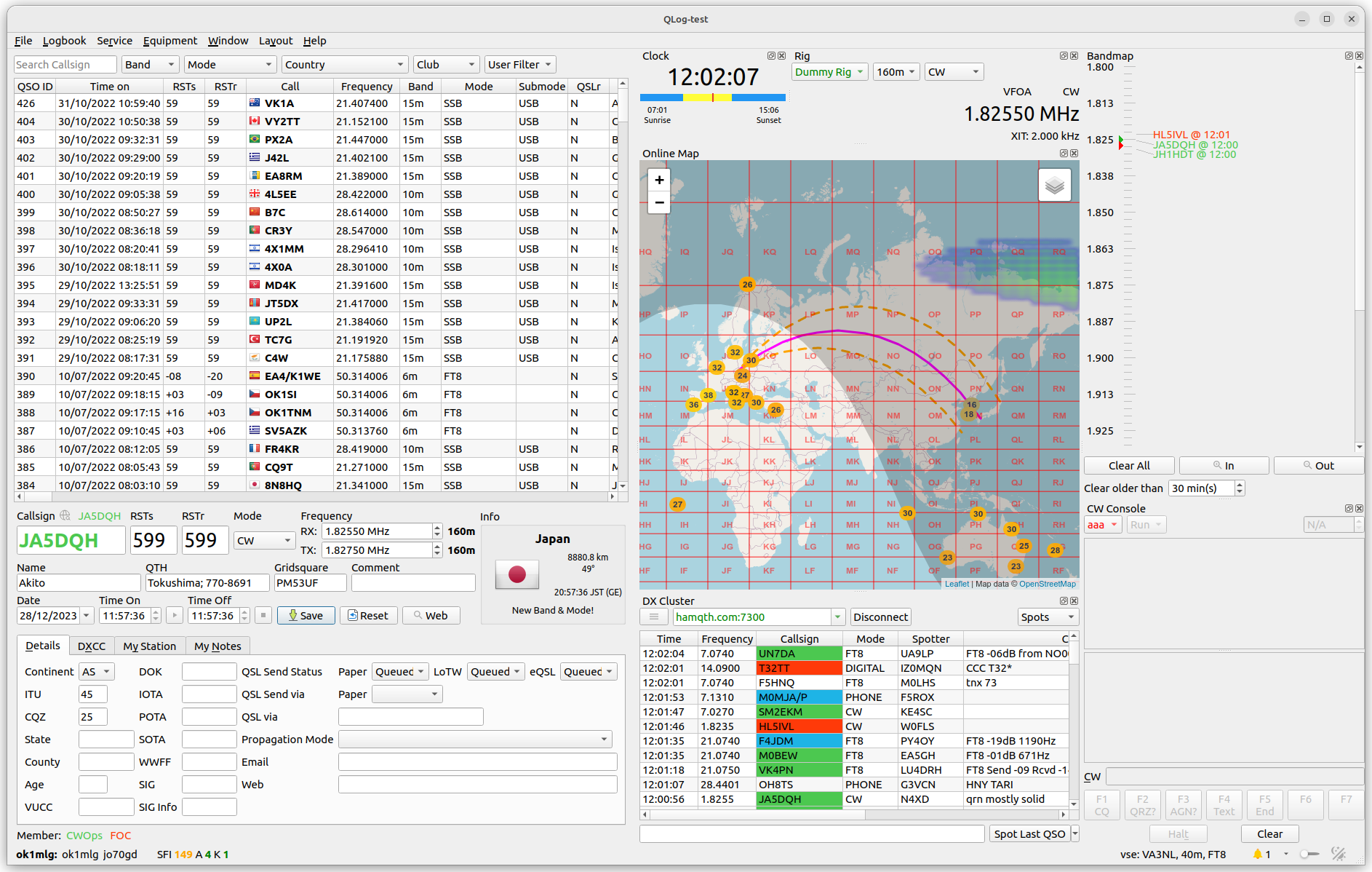-
Notifications
You must be signed in to change notification settings - Fork 31
Main Window
The main windows is divided into the following sections:
- QSO Table
- QSO Filters
- New QSO
- Additional Windows
QSO table is a core component of the main windows where all user’s QSO are shown. The default setting of the table shows only selected QSO information such as Time, Call, RST, Frequency etc.
The QSO information can be edited when use press CTRL+E (or F2) on the selected value. It is also possible to start Edit mod via windows Context Menu (Right-click)
The context menu contains actions:
- Edit value – already mentioned
- Filter Calsign – show all QSOs for selection Calsign in the log
- Lookup on QRZ - show QRZ’s homepage for selected Calsign
- Column Visibility – detailed setting which columns should be visible
- Upload to Cloudlog – upload selected QSO to ClubLog
- Delete – delete selected QSO.
QSO Table implements full set of ADIF fields and one additional field “Additional Fields”. The Additional Field contains all non-ADIF field in JSON form. Usually, the column contains an application specific tag defined in ADIF specification - such as “app_cqrlog_dxcc”, “app_cqrlog_profile” etc. For more details about the non-ADIF fields, please, refer ADIF specification. it is up to the user to decide what to store here, but the user is limited by the fact that the field must be in JSON format.
Example of the Additional Fields format
{ "app_cqrlog_dxcc": "F", "app_cqrlog_profile": "2|JN70GD|Bohdanecska||" }
The additional field is exported to the file but it is not send to the external services LoTW, eQSL etc.
The user can show received QSL card from eQSL by double-clicking on column eQSL Rcvd. QSL Image is downloaded from eQSL service and show in default image viewer. The image is locally store for future usage.
The QSO Table can be filtered via callsign match, pre-defined or user-defined filters.
Qlog has 3 pre-defined filters
- Band Filter – only enabled bands are shown
- Mode Filter – only enabled modes are shown
- Country Filter – only countries in QSO tables are shown
User-defined filter can be defined via Logbook → QSO Filters setting.
All filters, callsign match, pre-defined and user-defined filters can be used in the same table. The result is computed as logical statement
callsign AND band AND mode AND Country AND user-defined
An user can input many QSO parameters (Details Tab). Some of them are computed automatically (Continent, ITU, CQZ etc), some of them have an auto-completion feature (IOTA, SOTA), some of them have a free text format.
The SAT Tab is active only in case when Propagation mode is set to “SATELLITE”. An user can define the name of SAT and used mode.
DXCC Tab shows DXCC information related to the current callsign.
My Station Tab contains information related to my own station. The important parameter is Station Profile. The station profile defined own callsign, own gridsquare, own QTH and operator name.
An user can also defined which Rig and Antenna are currently used. Power information is retrieved from RIG or user can defined it manually.
Rig Frequency Offset defined frequency offset used by user’s rigs – support for transverters. the resulting frequency value that is stored in the QSO Table is then calculated as
main Frequency + Rig Frequency Offset.
If a new QSO is saved then additional information are stored or computed:
- Distance (when Locator is present)
- value of SFI, k-index, a-index
- etc.
Qlog contains additional Windows
- Band Map
- Clock
- DX Cluster
- Online/Offline Maps
- Rig
- Rotator
- WSJT-X
All Windows can be docked inside the Main Application Window or floated as a top-level window on the desktop. The windows layouy is saved automatically.

